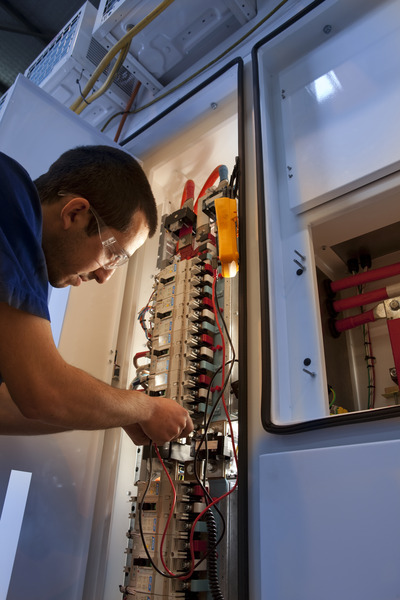Grid Stability System to minimise power fluctuations from solar plants
Thursday, 05 July, 2012
MPower’s Grid Stability System (GSS) is designed to minimise power fluctuations from solar generating plants into remote area diesel power stations by incorporating battery storage and control of battery energy to stabilise power production from photovoltaic (PV) solar power plants.
Some Australian electric utilities operate a substantial number of diesel-fuelled power stations for remote communities that are too distant to connect to the main electricity grids. These communities can include hundreds of residents, along with local commercial activities, and civil infrastructure to support the region. The wet season can make it difficult to access some communities by road for up to one or two months.
Photovoltaic power generation has been identified as the most consistent source of renewable power to cover the daily power consumption profile of these communities.
Incorporating a high level of photovoltaic power generation into a diesel power station can cause quality of supply concerns when the solar power level changes abruptly, such as from passing cloud on a sunny day, as diesel engines require at least a few minutes to adjust to significant power changes on the local grid.
There can also be short periods when the level of generated solar power gets close to or exceeds the local community consumption level, or where a power distribution feeder fault occurs, which requires the power output of the solar generating plant to be under direct and immediate control of the power station.
Both of these concerns could, if not managed properly, lead to unacceptable levels of electricity voltage and frequency changes, or possibly even power station outages due to protection devices tripping.

To address this issue, the MPower conversion business designed an inverter system with the ability to generate VARs and include sympathetic responses to changes in local grid frequency and voltage which can greatly assist the stability and quality of supply from the diesel power. Buffer energy storage also needs to be coupled to the solar power inverters to allow the total output power of the solar site to be maintained with a smoothed response profile.
The controlled ramp rates of the solar plant are achieved by short duration charges and discharges of batteries that fill in the deficit or excess of power required over many minutes of rapidly changing conditions.
MPower’s Grid Stability System (GSS) is designed to manage a solar generating plant and incorporate the accommodation and control of the battery energy storage.
Techniques and control systems used for the oil and gas industry, along with specialised battery management for remote area applications, makes the GSS a convenient and suitable product for these remote area solar power systems.
The containerised product is the hub of the solar power plant, combining the control and electrical distribution to the photovoltaic modules and solar power inverters as well as the electrical and fibre-optic point of connection to the diesel power station. Automated processes, and remote communications to MPower’s service group, allow the product to operate within the minimal local maintenance.
Tackling energy insecurity in remote communities
Researchers from Flinders and Macquarie Universities have presented the benefits of community-led...
Paper-thin LEDs that are kinder to the eye
A new, experimental LED is nearly as thin as paper and emits a warm, sun-like glow.
How clear windows can harvest energy
Researchers have created a colourless solar concentrator that can be directly coated onto...




